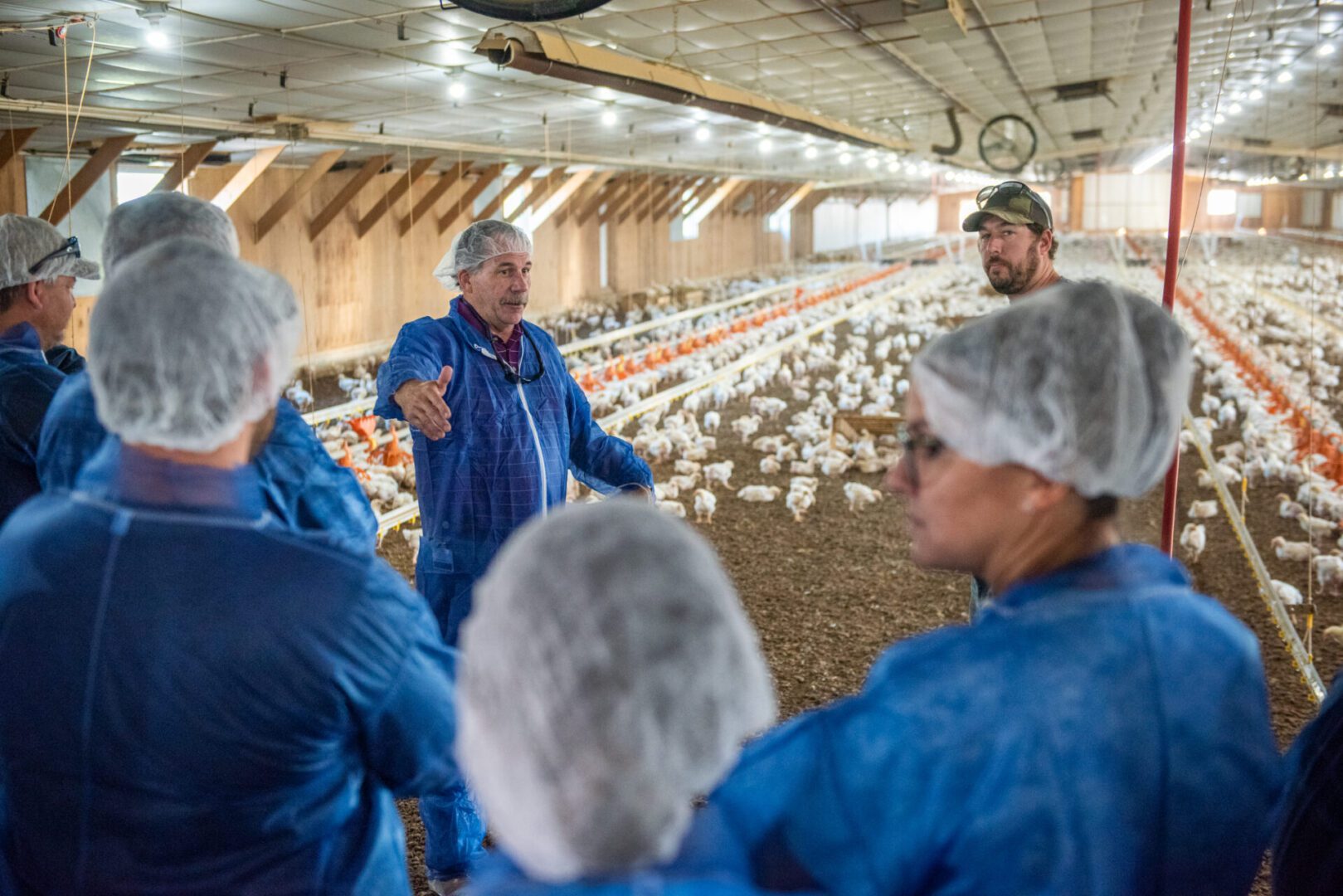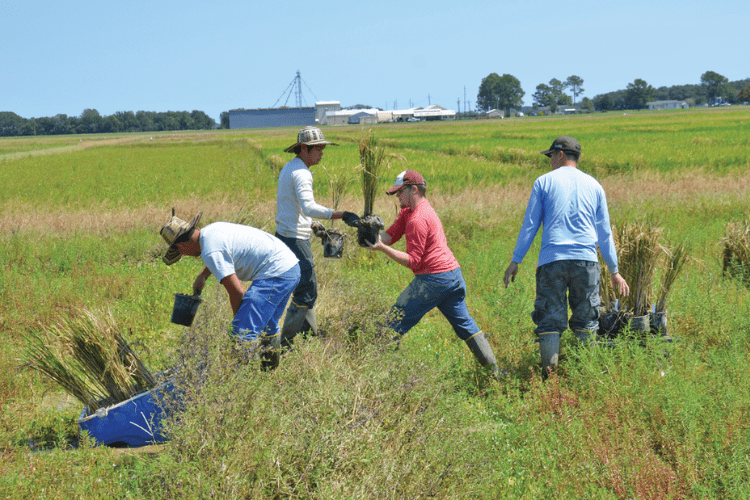JUNE 2024 TOOLKIT
AVIAN INFLUENZA
AVIAN FLU THREATS: The United States Needs to Prepare and Prevent Mutations that could Spread Among Humans
BACKGROUND
Avian influenza (also known as avian flu or bird flu) is a viral infection that primarily affects birds. Many strains of avian influenza (AI) viruses exist worldwide and can cause varying degrees of illness in poultry. Most AI viruses are classified as low pathogenic avian influenza and cause mild disease in poultry. These viruses naturally spread among wild aquatic birds worldwide and can infect domestic poultry and other bird and animal species.
Highly pathogenic avian influenza (HPAI) {also known as also known as H5N1} viruses are extremely infectious, fatal forms of the disease that typically kill 95 to 100 percent of an infected flock. HPAI is widespread in wild birds worldwide, can spread rapidly, and is causing outbreaks in poultry and U.S. dairy cows. H5N1 has the potential to devastate the poultry industry by wiping out entire flocks of birds.
A serious concern is avian flu’s potential to mutate into a form that can spread easily among humans, leading to a global pandemic. According to the Centers for Disease Control and Prevention (CDC), bird flu viruses do not normally infect humans. However, sporadic human infections with bird flu viruses have occurred and there are two recent human cases in U.S. dairy workers.
RECENT TIMELINE (2024)
- March 25: the US Department of Agriculture (USDA) announced the discovery of an outbreak of highly pathogenic avian influenza, also known as H5N1, in dairy cattle.
- April 1: CDC announced that the first human case of H5N1 due to cattle exposure was detected.
- May 1: CDC says that over 90 million birds have died or been culled because of this infection in the United States alone.
- May 6: CDC and USDA officials are monitoring the situation and spread of avian flu carefully. CDC states that the strain poses little threat to humans and the current public health risk is low. Monitoring and testing data are being reported and will be updated weekly on Fridays.
- May 17: Avian influenza virus type A (H5N1) has been confirmed in dairy cattle in nine states: 15 herds in Michigan, 13 in Texas, eight in New Mexico, six in Idaho, four in Kansas, two in Colorado, and one each in Ohio, North Carolina, and South Dakota.
- May 22: CDC reports that a Second Dairy Worker Has Contracted Bird Flu.
For continued updates and resources, please visit the new Extension Foundation H5N1 Resources website.
Sources: Mississippi State University Extension: Basics of Avian Influenza; MSN.com: With avian flu, it’s time to prepare, not panic; CDC: Information on Bird Flu | Avian Influenza (Flu) (cdc.gov); AVMA: Avian influenza virus type A (H5N1) in U.S. dairy cattle; New York Times: A Second Dairy Worker Has Contracted Bird Flu, C.D.C. Reports
USDA’S NATIONAL ANIMAL HEALTH LABORATORY NETWORK
The National Animal Health Laboratory Network (NAHLN) and USDA’s National Institute of Food and Agriculture (NIFA) collaborate to safeguard American agriculture. NAHLN was established in 2002 as a cooperative effort between several entities including USDA-APHIS Veterinary Service, NIFA, and American Association of Veterinary Laboratory Diagnosticians.
- NAHLN is a network of federal, state, and university-associated veterinary diagnostic laboratories. Its key functions include disease surveillance, rapid response, communication, and diagnostic capacity.
- NAHLN has grown to include 60 laboratories across the U.S. that are capable of testing large numbers of samples for specific disease agents. Influenza A Virus in Avian (IAV-A) Laboratories are often affiliated with land-grant universities.
- NIFA and NAHLN work together to protect the U.S. livestock and food sectors, which contribute over $150 billion in annual cash receipts. Their collaboration ensures that resources, testing, monitoring, and data can be shared, and procedures can be rapidly implemented in response to biological threats to the nation’s food animals.
Sources: National Animal Health Laboratory Network (usda.gov) and Influenza A Virus in Avian (IAV-A) Laboratories (usda.gov) and National Animal Health Laboratory Network: Protecting the American Agriculture System for 20 Years | NIFA (usda.gov)
EXAMPLES OF IMPACTS
Thanks to our member institutions and our friends from American Association of Veterinary Medical Colleges (AAVMC) for providing examples of their critical work on avian influenza.
MAP OF AVIAN FLU SPREAD

UC Davis Veterinary Medicine News: UC Experts Create Map of Avian Flu Spread
April 25, 2024: A poultry expert at the UC Davis School of Veterinary Medicine (SVM) has teamed up with a geographic information systems (GIS) expert at UC Agriculture and Natural Resources (ANR) and two wildlife health experts from the UC Davis SVM Wildlife Health Center (WHC) to create a map showing the spread of highly pathogenic avian influenza (HPAI) since 2021.
IMPACTS BY STATE
Multistate Research Fund
Auburn University, University of California Statewide Administration, University of California, Davis, University of Connecticut, Cornell University, University of Delaware, University of Georgia, University of Illinois, Iowa State University, University of Maryland, University of Minnesota, University of Nebraska, Ohio State University, Purdue University, Southeast Poultry Research Laboratory, USDA-ARS/Georgia (2019-2024): This project was renewed in 2024 and may include additional participants.
Multistate Research Projects Address Avian Influenza
Scientists are working together to develop strategies to prevent, detect, and manage poultry respiratory diseases, including avian influenza. Their work benefits poultry health and productivity, helps poultry producers remain profitable, and protects food security and safety.
SOCIAL MEDIA
SAMPLE POSTS
RESEARCH
Land-grant university researchers like [NAME] safeguard animal health. [Their] research helps protect the global food supply by developing strategies to prevent and control livestock diseases like avian influenza: LINK
EDUCATION
Educators at #LandGrantUniversities are preparing the next generation of agricultural professionals to tackle national and global challenges in animal health. In [@SCHOOL] course [COURSE NAME], our students learn best practices to protect livestock from diseases like avian influenza.
EXTENSION
Cooperative Extension professionals provide science-based solutions to producers’ problems in animal health. From diagnosis to best practices for management, Extension professionals are helping [STATE] farmers prepare for potential avian influenza outbreaks: LINK
Looking for pre-made stories to feature? Check out:
- Land-grant Impacts
Scroll down to "View by Institution" and click your university's name. Only institutions who submitted impacts to the National Impacts Database in 2023 are listed. This page features research and Extension impacts. - Multistate Research Funds Impacts
Scroll down to "Filter by Institution" on the sidebar and click your university's name. This page features research impacts.
Feel free to reach out to us with specific posts that you would like @AgIsAmerica to share. Please email your request to Kim Scotto at agcomms@aplu.org or use #AgIsAmerica.
HASHTAGS AND HANDLES
HASHTAGS
#LandGrantUniversities
#AgIsAmerica
HANDLES
|
Ag is America |
@AgIsAmerica |
|
APLU Ag |
@APLU_Ag |
|
Sec. Vilsack (Secretary of Agriculture) |
@SecVilsack |
|
USDA |
@USDA |
|
USDA National Institute of Food & Ag |
@USDA_NIFA |
|
APLU |
@APLU_News |
|
Cooperative Extension |
@Ext100Years |
CALENDAR
JUNE HOLIDAYS
MONTHS
National Dairy Month, #NationalDairyMonth #RealDairyRealDelicious
National Great Outdoors Month, #GreatOutdoorsMonth
National Pollinator Month, #PollinatorMonth
WEEKS
June 1-9: National Fishing and Boating Week, #NFBW2024
June 17-23: Pollinator Week, #PollinatorWeek, Toolkit
DAYS
June 1: National Prairie Day, #NationalPrairieDay
June 1: National Trails Day, #NationalTrailsDay
June 1: World Milk Day, #WorldMilkDay, #EnjoyDairy, Toolkit
June 1: World Reef Day, #WorldReefDay
June 3: National Egg Day, #NationalEggDay
June 4: National Cheese Day, #NationalCheeseDay
June 5: World Environment Day, #WorldEnvironmentDay, #GenerationRestoration, Toolkit
June 6: World Pest Day, #WorldPestDay, Toolkit
June 6: National Higher Education Day, #NationalHigherEducationDay, #NHED
June 7: World Food Safety Day, #WorldFoodSafetyDay, @WHO, @FAO, Toolkit
June 8: World Ocean Day, #WorldOceanDay, Toolkit
June 10: National Herbs and Spices Day, #HerbsAndSpicesDay
June 14: National Cucumber Day, #NationalCucumberDay
June 16: Father’s Day, #FathersDay
June 19: Juneteenth, #Juneteenth
June 20: First Day of Summer
June 27: National Onion Day, #NationalOnionDay
Source: June - National Day Calendar




